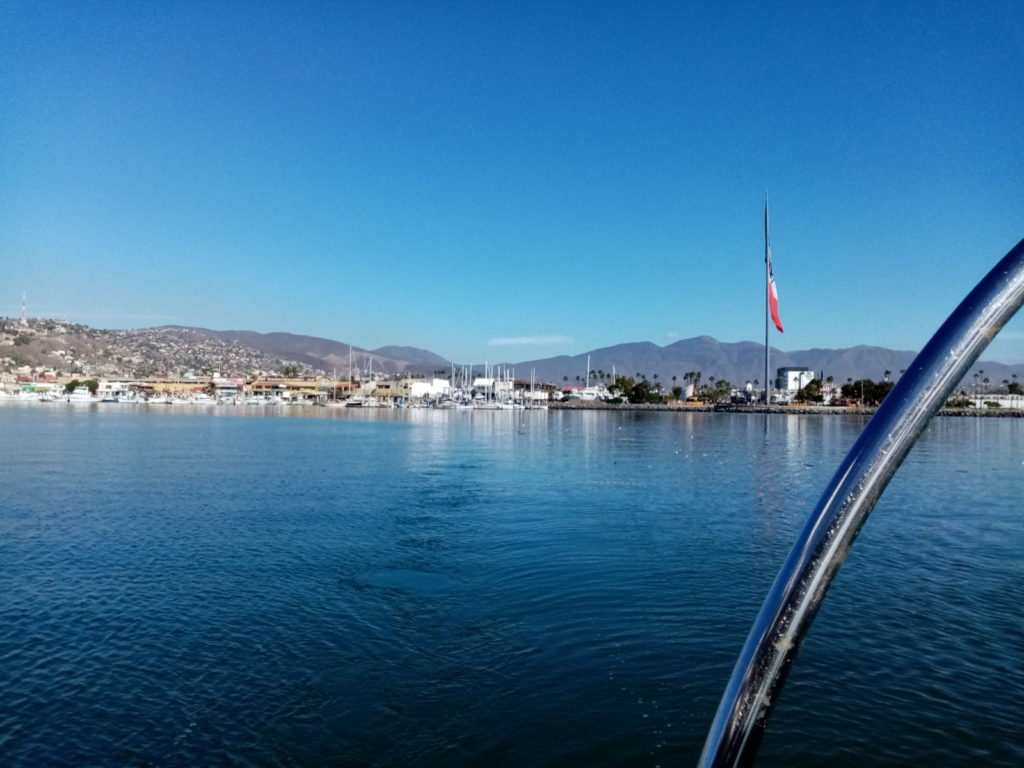Ensenada has the largest flag I have ever seen. It has pride of place at the centre of the small town square on the waterfront. We could see it billowing in the wind as we approached Ensenada Marina on the morning of Friday 8th November after an overnight passage from San Diego. For most of the way we had been hearing frequent marine reports on the VHF from the San Diego coastguard, delivered in clear and concise language relating to weather, things to watch out for and the odd ‘pan pan’ call. In the early hours of the morning during my watch I was in the cockpit looking at the shoreline of Mexico in the far distance when I was startled by a cheery ‘Hola’ from one of the fishermen on a nearby boat and realised that the American broadcasts must have ceased at some point during the night. We were truly in Mexico now. By the time Paul came on watch at 8am more boats, or pangas as they are called here, had appeared and the shoreline was getting nearer so it didn’t seem worth going to sleep.
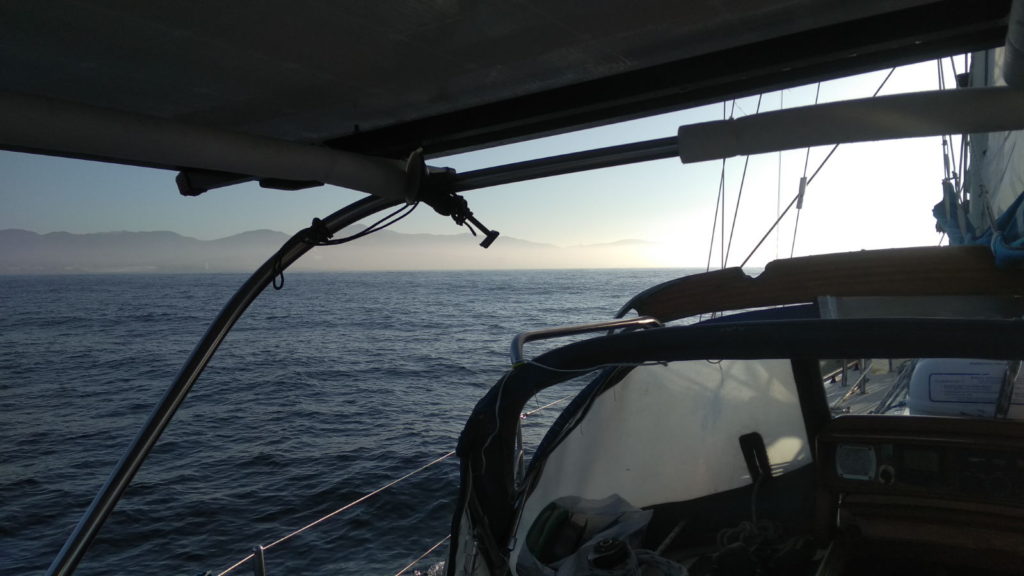
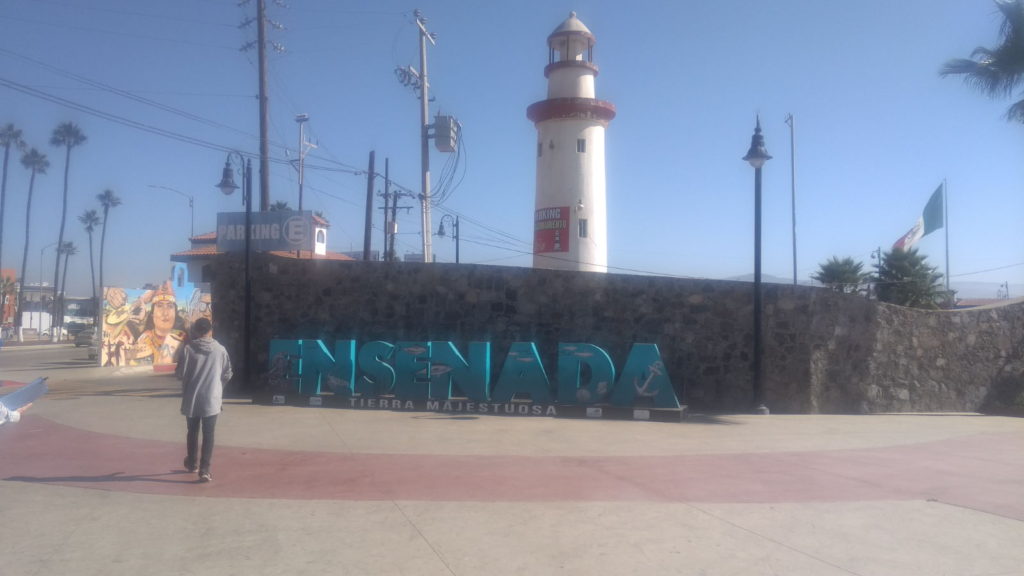
The flag was now clearly visible as Mexico’s colourful national flag and made a captivating sight high up as it was and moving gracefully in the wind. We hadn’t bothered calling in to report our approach because we’d already been allocated a specific berth. I was looking out for it through the binoculars, waiting for the pontoon letters to become clearer when I noticed two men standing on the one at the outside edge. They beckoned us over, took our lines and one of them bid us ‘welcome to America’ (just Victor’s little joke – he’s not a big fan of the US). Victor, the manager at Baja Naval Marina proved to be an efficient, friendly and helpful guy as we got to know him. It was he who, after we’d freshened up a little, escorted us to the places we had attend to check in for immigration, customs and with the harbour master. Victor acted as our interpreter, tour guide and instructor as we were hurried through the dusty streets after 20 minutes of passing forms and sheets of paper back and forth in his tiny office. First we had to visit a shop in order to change a bank note so that we would have the exact money to pay the various authorities. I hardly had time to take in my surroundings as he and Paul strode on ahead. I did, however, come to notice one of the first differences in Mexico from Canada and America on those streets. Crossing the roads was hazardous! If I fell too far behind due to taking photographs and Paul and Victor had crossed a busy road ahead, I found myself struggling to work out the ‘green cross code’ equivalent for getting to the other side without being mown down. If no lights were in operation to halt the traffic you simply had to wait for a suitable lull and take a chance stepping out and hurrying across before the next car got too close. I also noticed the pavements were in a state of disrepair, with rubble, gaping holes and uneven concrete slabs providing more hazards to avoid. Victor appeared to know every stall holder and passer-by we came across, shouting a cheery ‘bon dia’ to them as he marched us forward.
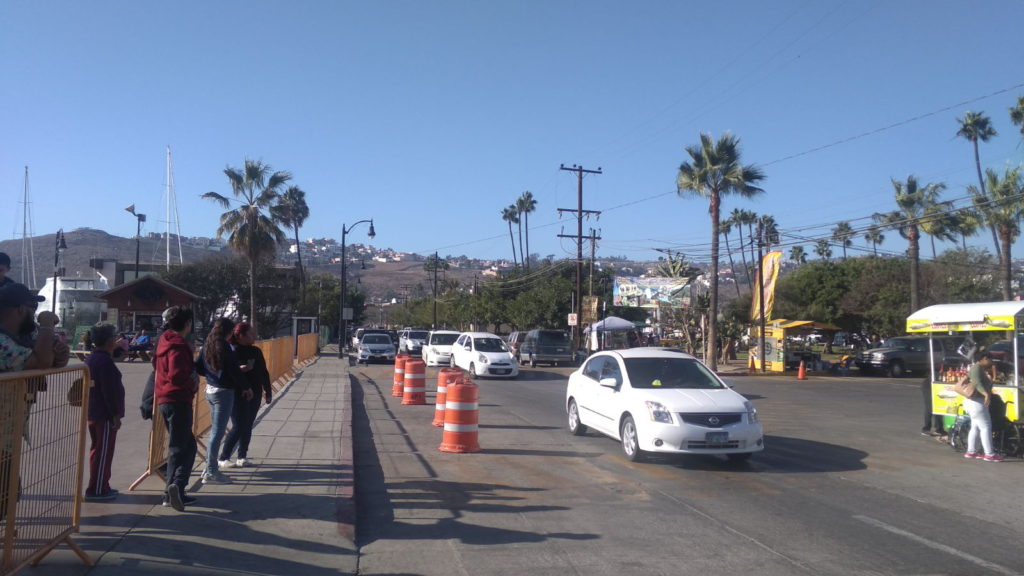
We chatted to him along the way, telling him where we were from, where we were heading and asking questions about where to find things in Ensenada. Arriving at the building slightly out of breath and sweating from the heat (I was anyway), Victor guided Paul to the relevant desks and told him what papers to show, translating and explaining and selecting the money needed to pay for permits etc. I was a bit superfluous to most of this so took the opportunity to sit and rest while watching the proceedings and marvelling at the fact that Victor has to do this several times a day for foreign boat owners, both for checking in and checking out. Small wonder he is so slender, but he’s also unfailingly cheerful, witty and appears to have endless energy. Our energy was diminishing rapidly by the time we got back to the boat. We hadn’t had much sleep and the heat, walking and all the bureaucracy had taken it out of us. We would have two weeks to explore Ensenada so were in no hurry to do too much on our first evening. A promenade runs along the length of the waterfront from the Cruise Ship Terminal to end of the harbour. This walkway is lined with restaurants, bars and shops, the square being roughly in the centre.
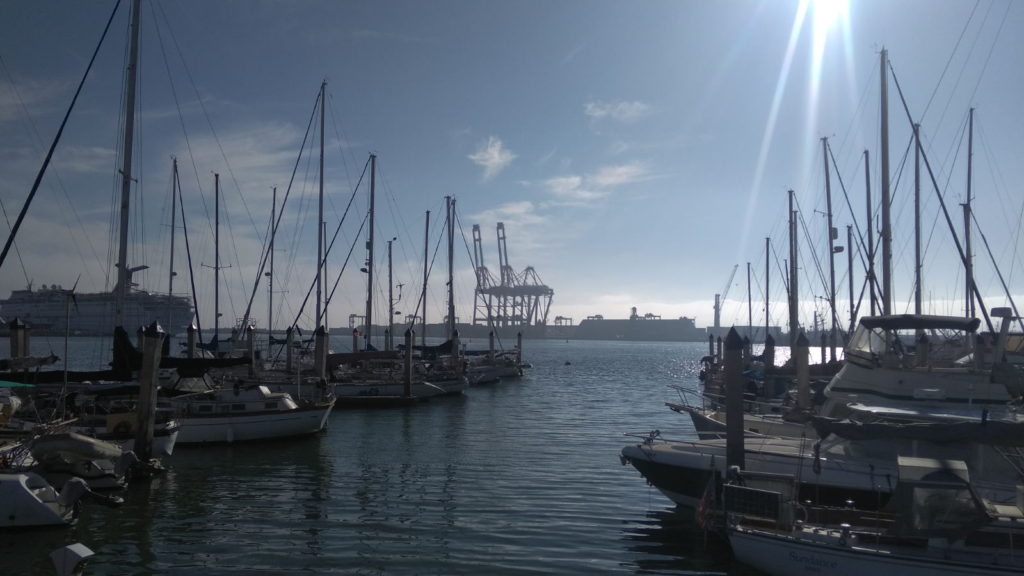
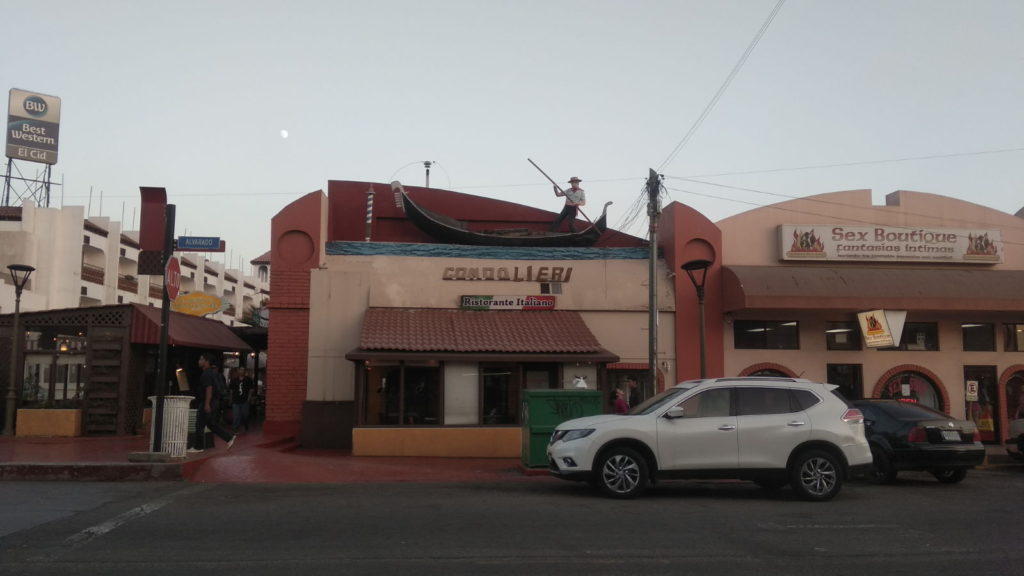
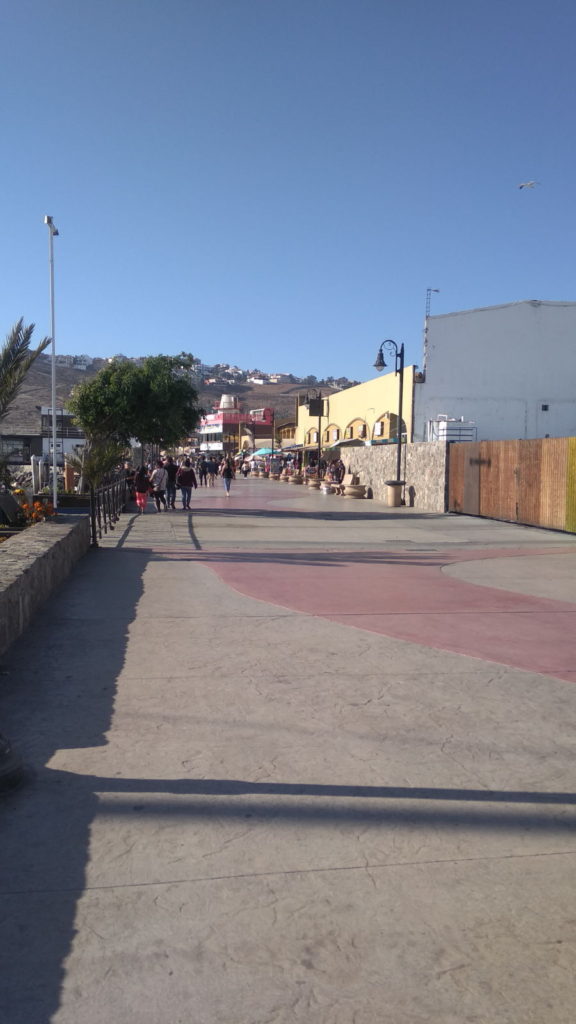
The square is lined with fast food stalls and has a stage for performances. As we got ready to go for a short walk the unmistakeable sound of brass instruments reached our ears. The mariachis were tuning up – actually they were playing tunes, it just sounded like they were tuning up to me. I’m not a fan of music with brass instruments, especially trumpets, and there would be no escaping this considering our position in the marina. It seemed every eatery along the prom had their own band or a recorded performance emanating from it, causing quite a cacophony of sound. As we walked along each and every restaurant had staff placed outside urging strollers to come in to eat or have a tequila/margarita/mojito/beer/. Since this was to be our main route into town it looked like we’d have to get used to simply politely declining several times and hope they’d remember that one of us was one of those weird ‘veganos’ while the other was a ‘sin alcohol’ person.
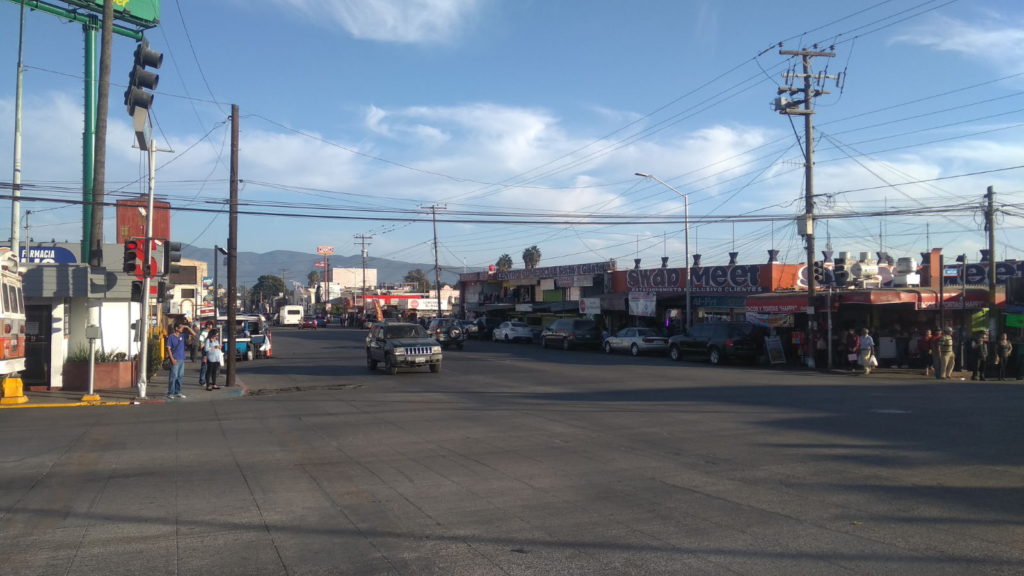
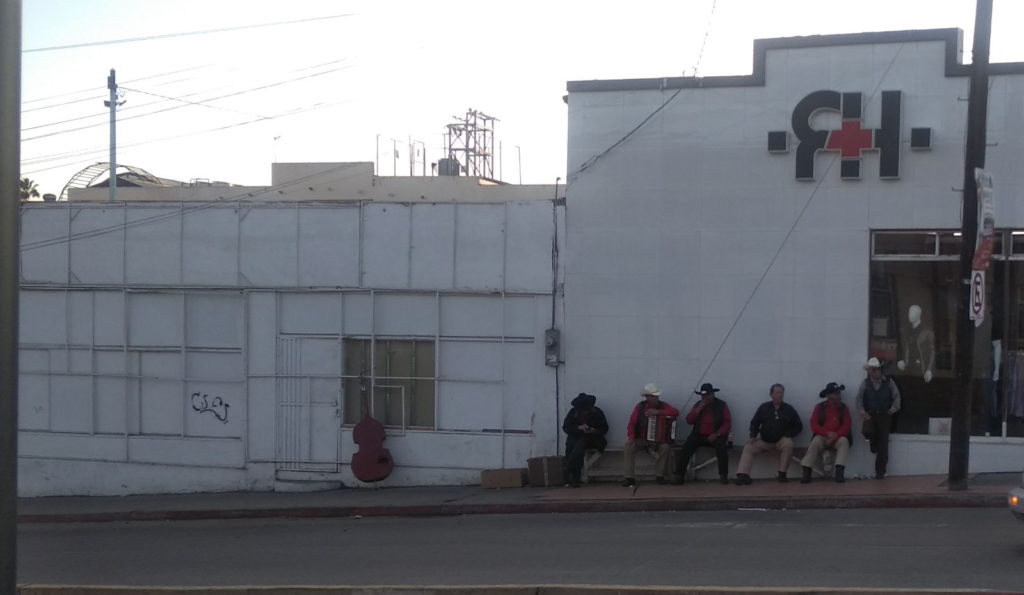
Naturally, as in most of the places we visit on a coastline, the food on offer in most restaurants and shacks is predominantly seafood. One afternoon during our time there Paul decided to try the highly recommended tacos in a tiny outdoor cafe just off the main street. It was clearly popular with both locals and tourists and there was a man busily working behind the counter to keep up with demand, flushed and sweating from the heat of frying and ladling the various fillings into tacos. While we waited for Paul’s order I watched what other customers were doing with their plates of food. It seems there is quite a ritual involved in putting it all together. Once you have been handed the plate, you then add things like chopped onions and tomatoes, green chilli sauce, and a selection of various dressings to pour on top of it. It all looked a bit of a messy affair to me. I’m sure I would have ended up with a multi-coloured face if I’d attempted to eat one by hand as so many were doing. Paul enjoyed his chicken one with the aid of a fork – a pic of his dish below.
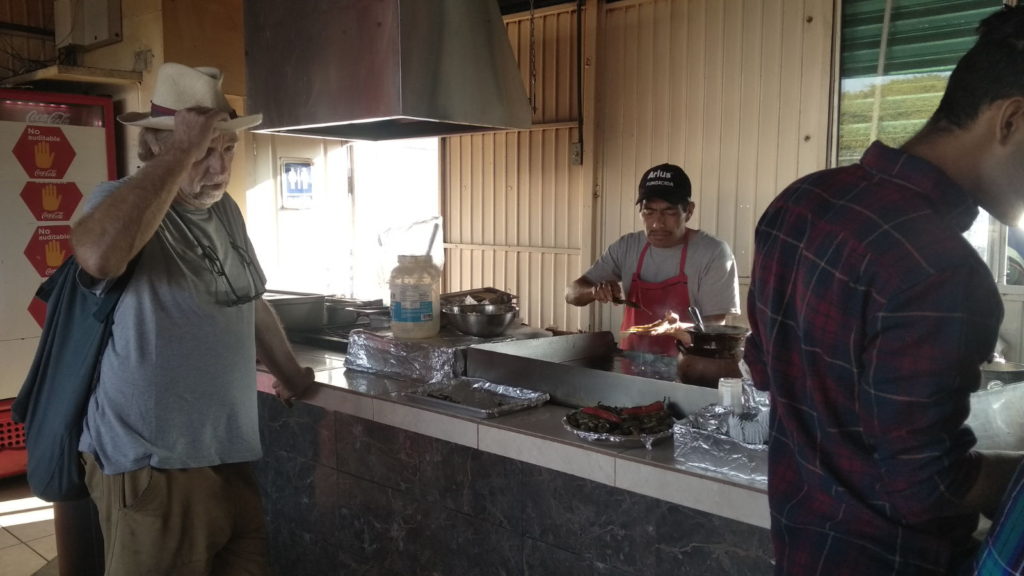
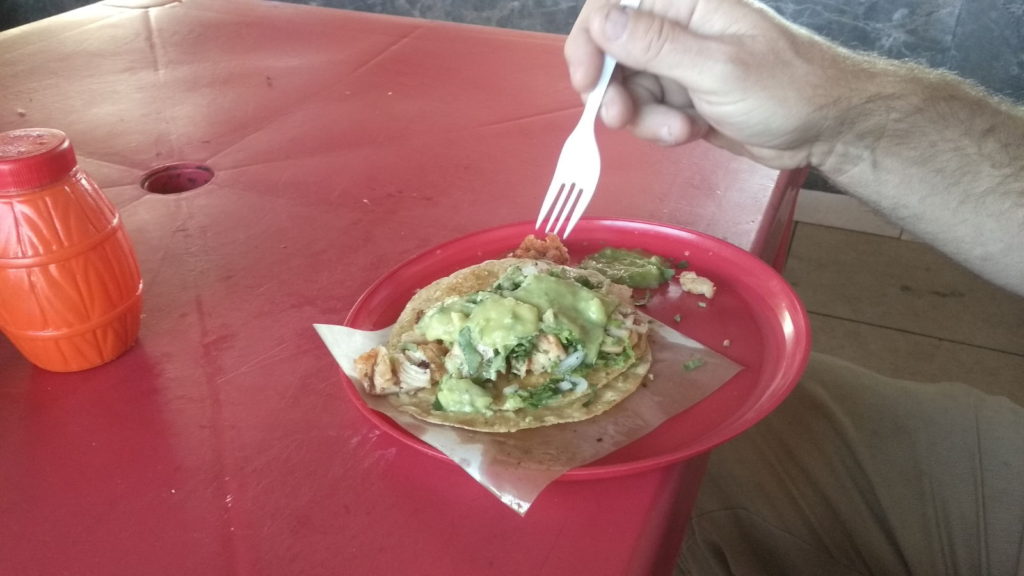
Ensenada’s Hermosa Beach is described in our National Geographic guide as a popular place for horse riding but goes on to state that the horses there look ‘rather miserable’. We saw those horses when we walked to the beach on our first Sunday in Ensenada. It was a hot morning when we set out for the 30 minute walk and we planned to find somewhere to have a drink once we reached the beach. The walk was adjacent to the main highway and we passed a ranch type establishment which had a group of horses tied to a fence near the road. Horse-drawn carriages ferry tourists from the cruise liners on pleasure trips along the road so they are probably used for that purpose as well as beach rides.
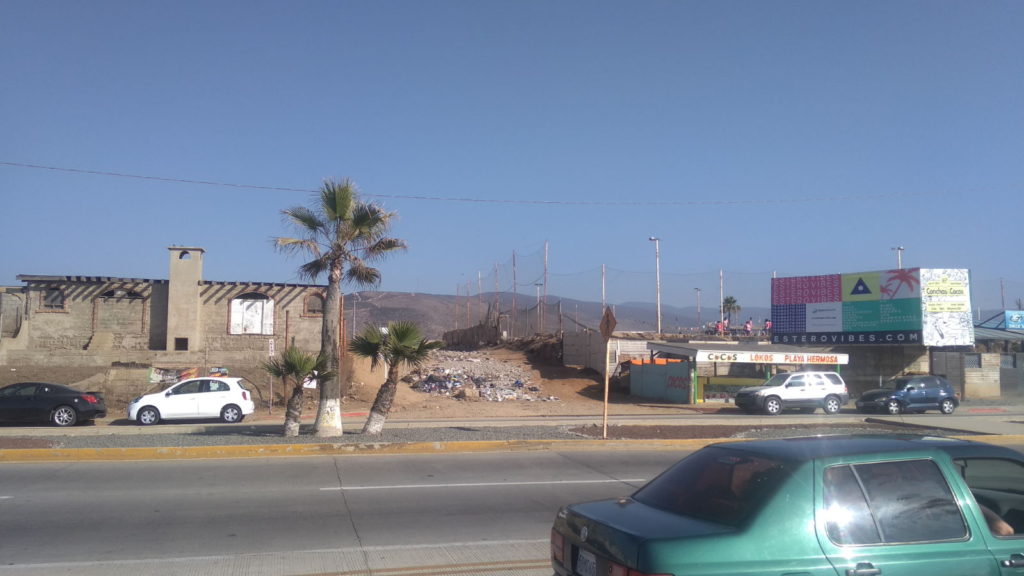
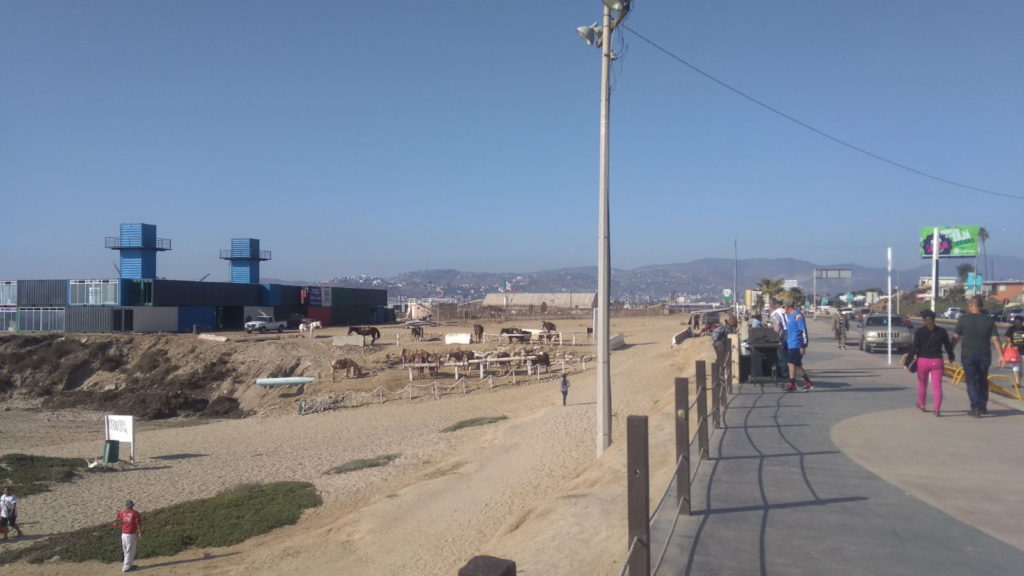
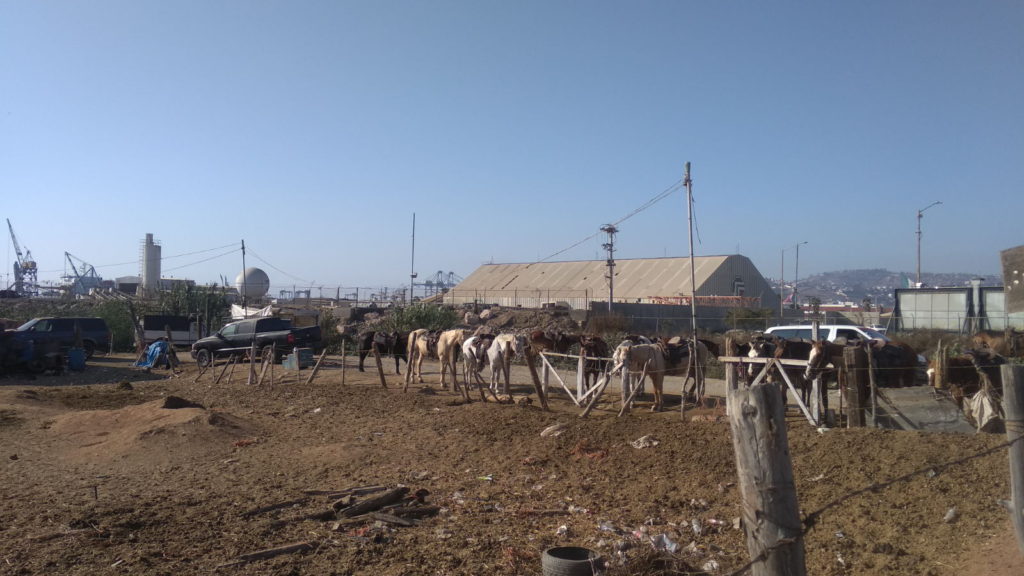
As we neared Hermosa Beach, I could see that while there is a vast stretch of sand and the beautiful glistening Pacific, the similarity to California’s beaches ended there. This is mainly because of the lack of money to add ‘finesse’ to the surroundings. For example, the beach wasn’t tidied or maintained so although it wasn’t filthy, there was some litter and horse droppings to avoid. Deserted and industrial-looking buildings and barbed wire fences in-between the beach and the main road gave an overall downbeat vibe to the area. The sand was dotted with brown, palm covered tables for picnickers and the odd makeshift tent selling beers and drinks from a cool box. A line of passenger-laden horses was being slowly led along the edge of the beach, on a path set away from the people on the sand. I’m not sure about the accuracy of the miserable-looking description. The owners must make sure they are adequately fed and watered but they certainly didn’t look groomed or ‘perky’ with their heads down and their mottled coats…and some of the riders were not exactly slender.
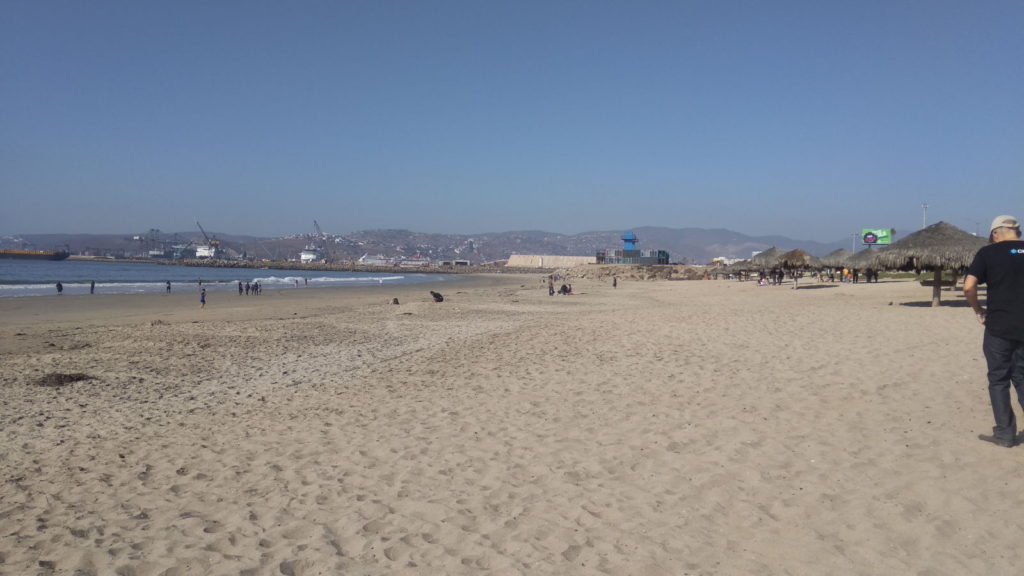
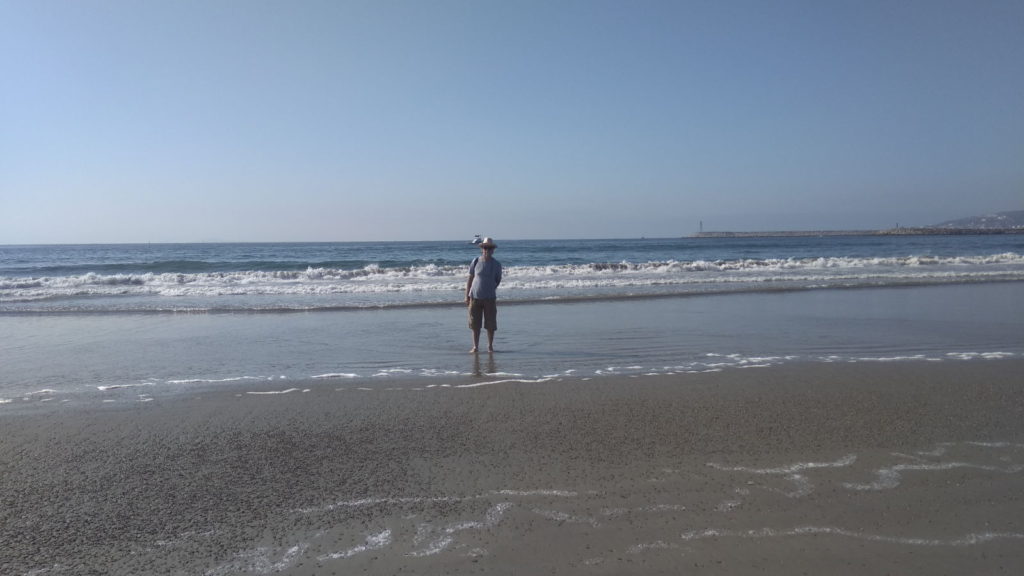
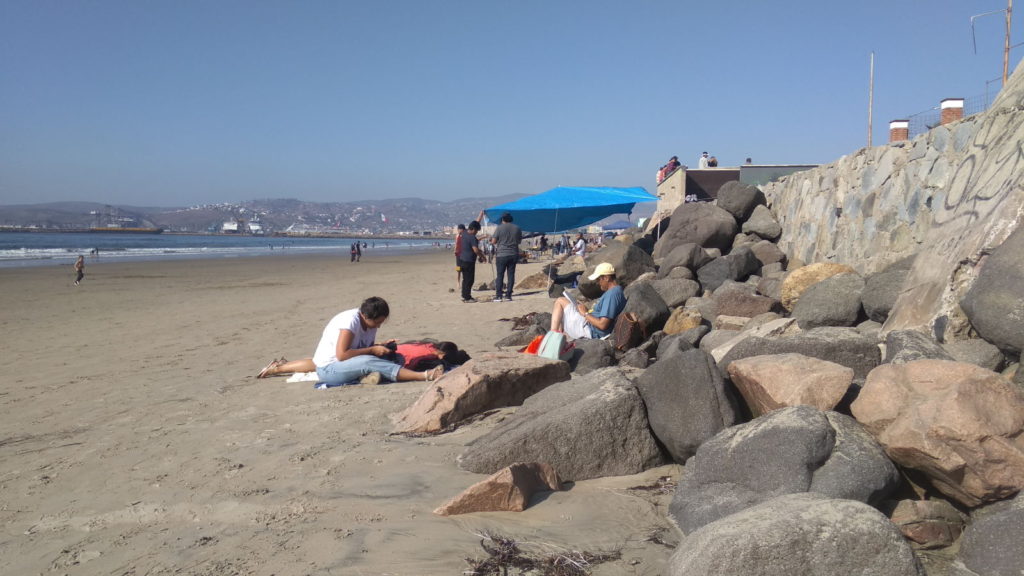
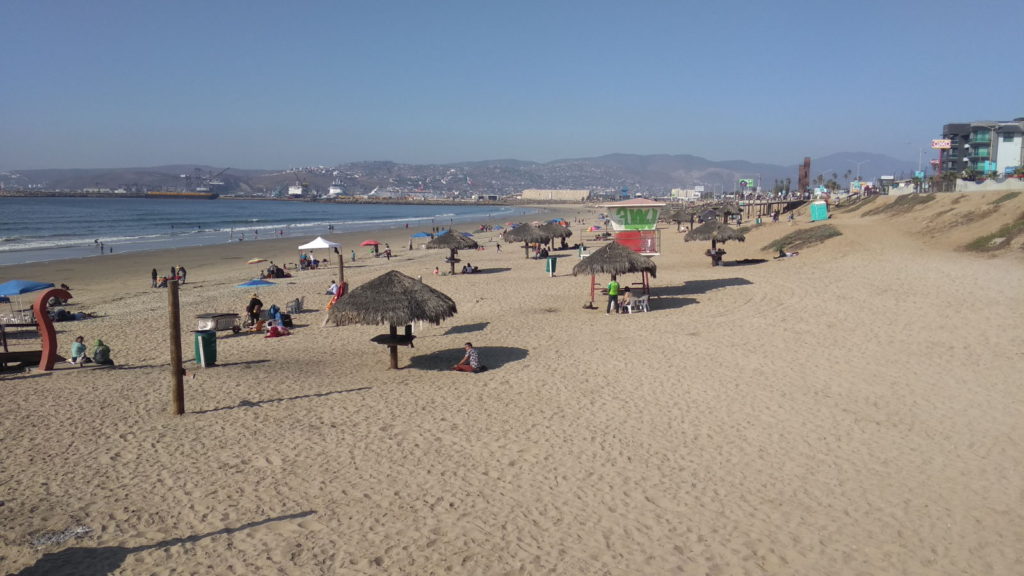
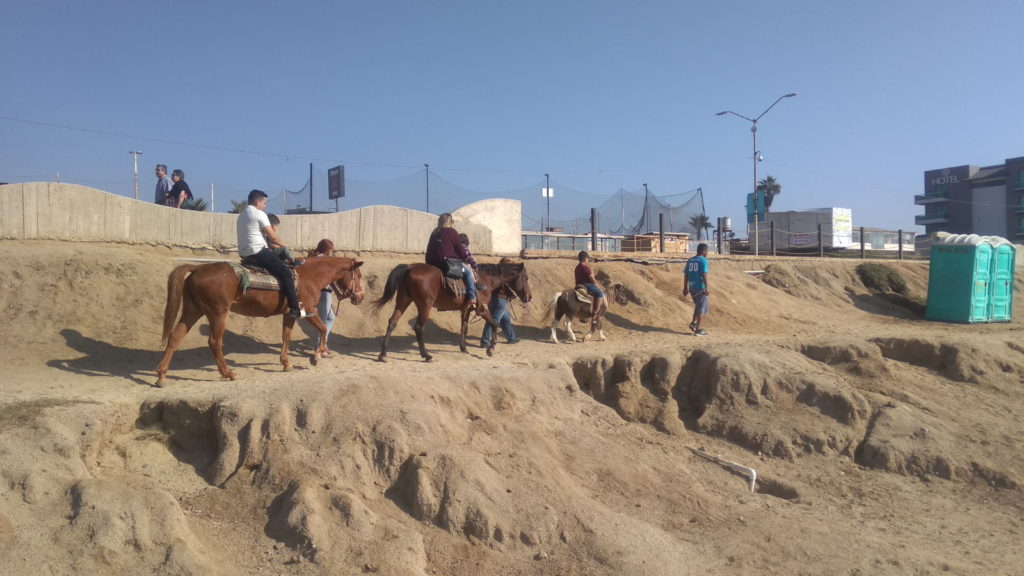
At the end of the sand there were a few buildings selling seaside articles such as buckets and spades and windmills but a distinct lack of anywhere to get a drink, apart from the cans being sold on the beach. We sat for a while watching families and visitors make the most of the balmy weather and decided to walk back along the sand. In hindsight, I realise I was judging Hermosa harshly having so recently left California’s pristine resorts, which isn’t really fair. The distinction between the two countries is obvious. America has money in place to make the most of its waterfront locations. Mexico’s economy has no budget for leisure like that of the US. We bought a book about customs and culture in Mexico and learned that 40 per cent of the population live below the poverty line and the majority are not far above it. Leisure is important in this hard working country, especially on Sundays which is, and always has been here, a day for families to spend time together. An afternoon on the beach is made the most of, however it looks. I would clearly need to refine my expectations if I was going to make the most of my time here.
I have never thought about owning a grain of rice with my name on it but we were constantly being asked to buy one whenever we walked past the street vendors. On Monday I ventured out on my own to get a few things from the supermarket. The streets were very crowded and without Paul’s expertise on crossing busy roads, I found myself pathetically sidling up to other people waiting to cross and tailgating them to the other side. Along with the rice sellers were the usual street touts, urging you to go inside shops and buy genuine Mexican souvenirs or into bars and restaurants. Several of the establishments in the town have signs outside welcoming cruise ship passengers, so I guess they are likely to be Ensenada’s main visitors. The supermarket shop was pleasingly cheaper than any in Canada and the US had been, although I hadn’t got used to converting pesos yet and I had to call on my very limited Spanish to understand what was being said to me at the checkout.
Our stay in Ensenada lasted two weeks so we got to know the town quite well. We paid a visit to the nearby museum and the cultural centre one sunny afternoon. We declined the option of a guide to show us around the museum, preferring to read the exhibit signs ourselves. It would have been churlish, however to refuse one young guide’s kind offer to lead us into one of the private balconies above a hall on the upper floor so that we had a view of the area where a casino used to be. He told us in his limited English that rich Americans used to flock there during the prohibition to drink and gamble.
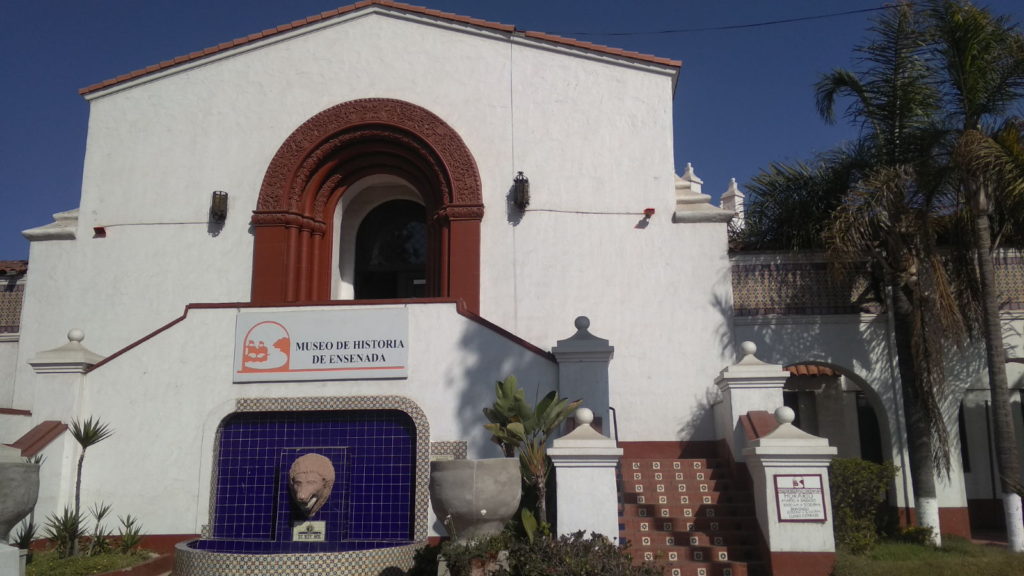
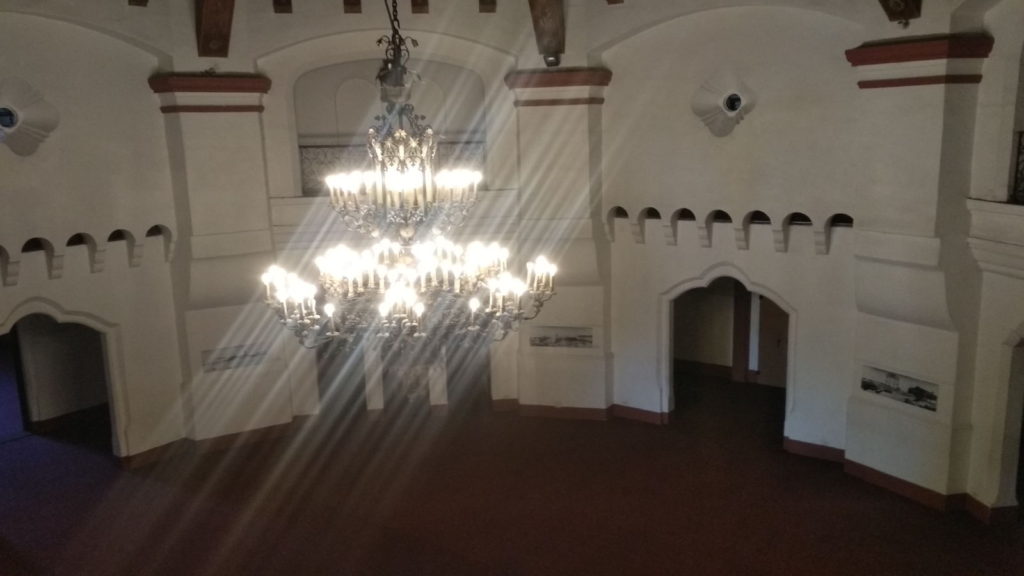
The cultural centre had a Spanish-style square with stalls selling handmade crafts and gifts. We sat there after buying drinks in a very impressive old style bar enjoying the sun and admiring the products on sale.

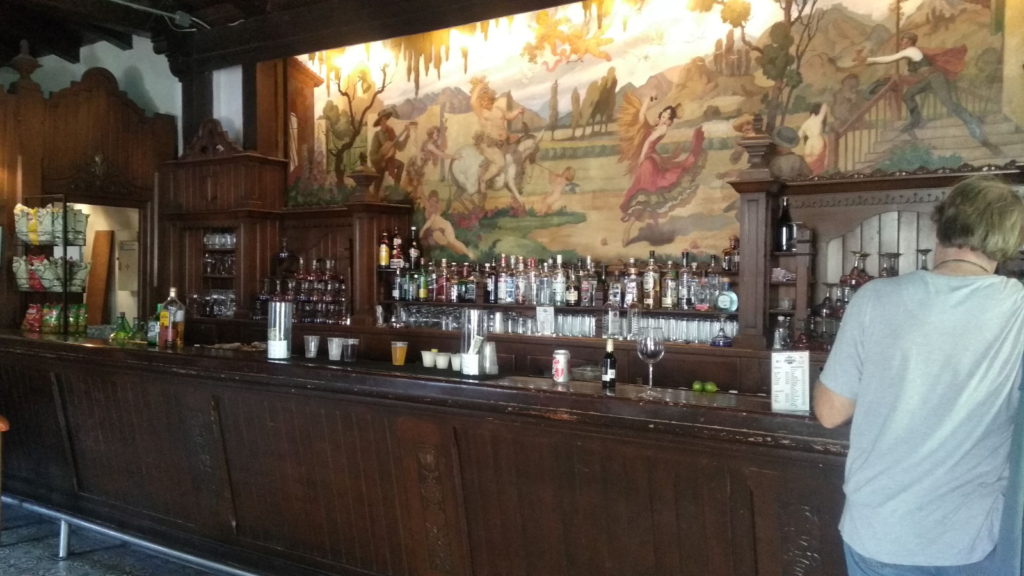
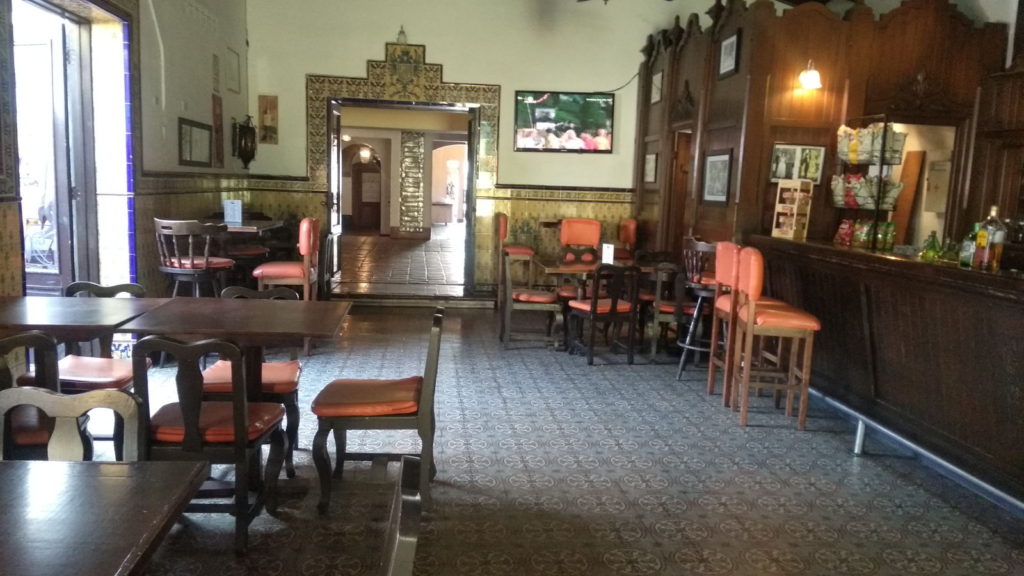
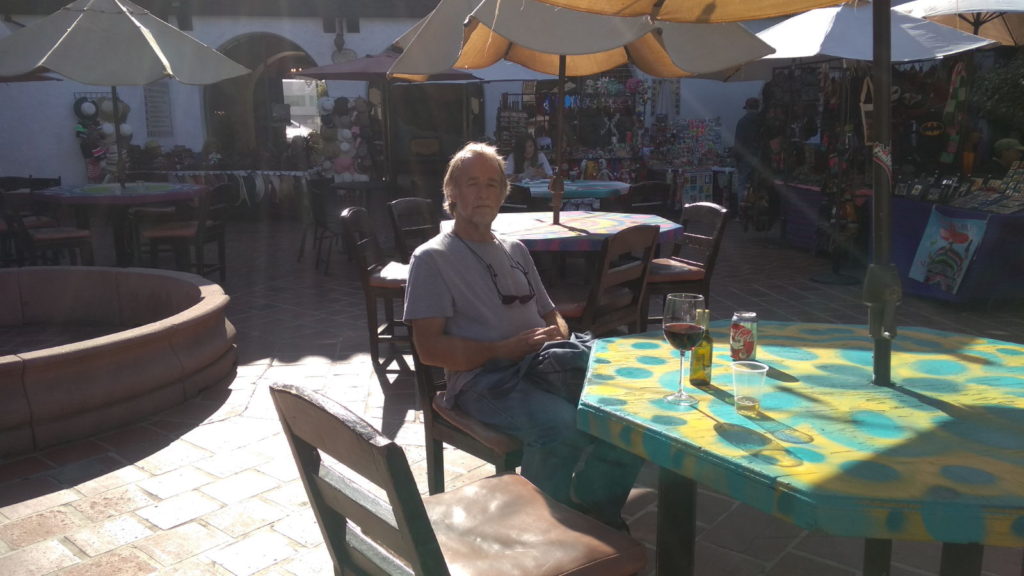
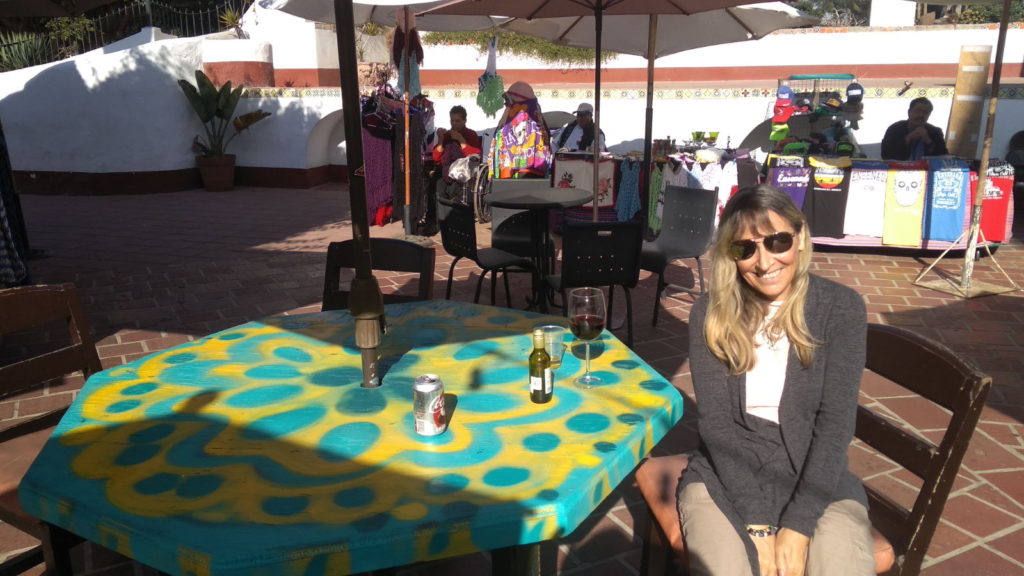
Later that day when we’d just found a laundry recommended to us by the marina staff, a man approached us to tell us that it was an excellent laundry with lovely staff. He then produced a flower he had fashioned out of palm reed and asked us to buy it. He had a young boy with him and explained that he was trying to teach his son that you don’t get money just by asking. Paul told him he admired that, gave him some money and said he liked him. We were surprised by his retort; ‘well I don’t like you’. He followed with a laugh that it was only a joke, but there was just enough in his face for me to wonder, and then he held his hand out and asked for more money and we decided it was time to make a polite retreat into the laundry. Thankfully that was an isolated incident. We’ve mostly been greeted with smiles and waves and experienced good humoured interaction everywhere we’ve been.
It was good to see the celebrations for revolution day while we were there. The weekend before the actual day on the 19th, there was a performance in the square on the Saturday evening. We went along to have a look at the dancers which was very similar to line dancing. The music was quite good, too in that it wasn’t dominated by trumpets. We weren’t quite as keen on the female singer dressed up as a bullfighter who let’s just say, didn’t sing all that well.

We also saw the raising of the mammoth sized flag which was quite a sight to witness. Viewed from far below the flag looks like a giant silk handkerchief, very light and delicate. When we reached the square we saw men from various military groups lining the edge of the square armed with rifles and standing to attention. The flag was rolled up and being held by at least a dozen men in a row with their arms stretched out to support it. It was clearly heavy and we could see that the material was much thicker than it seemed. The strain of holding it up began to show after a while and I felt thankful for them that it wasn’t a sweltering hot day. Behind us on the main street, armoured vehicles carrying men poised with rifles appeared, much to my consternation. I don’t think I will ever get used to feeling comfortable when weapons are in such close proximity.
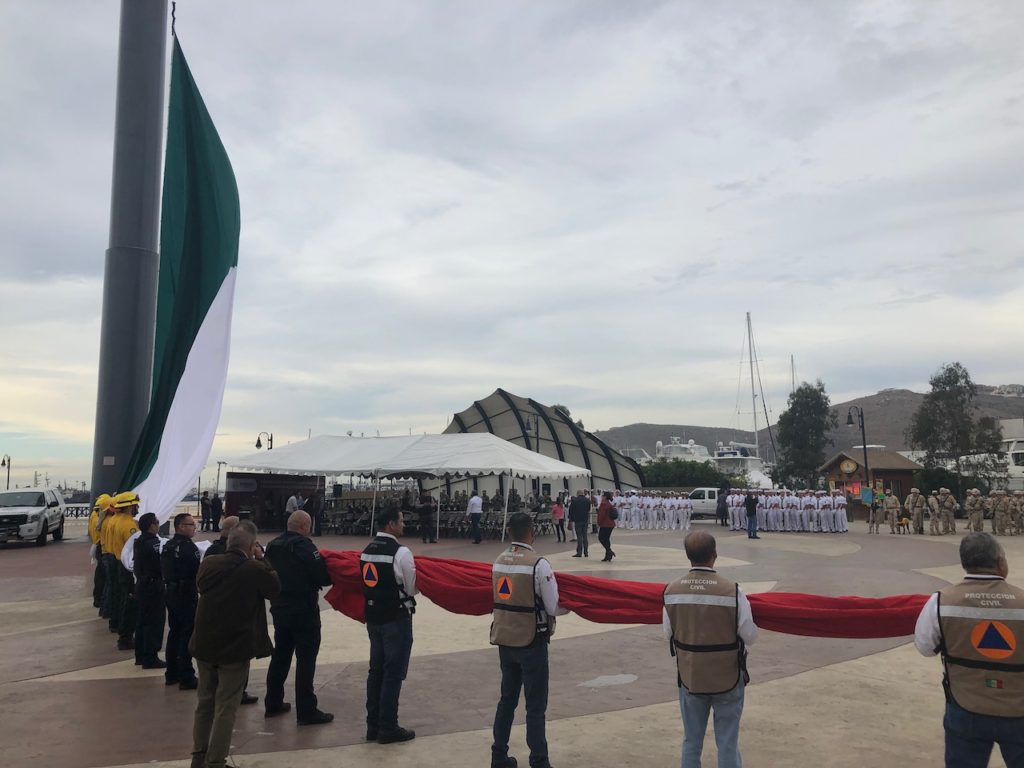
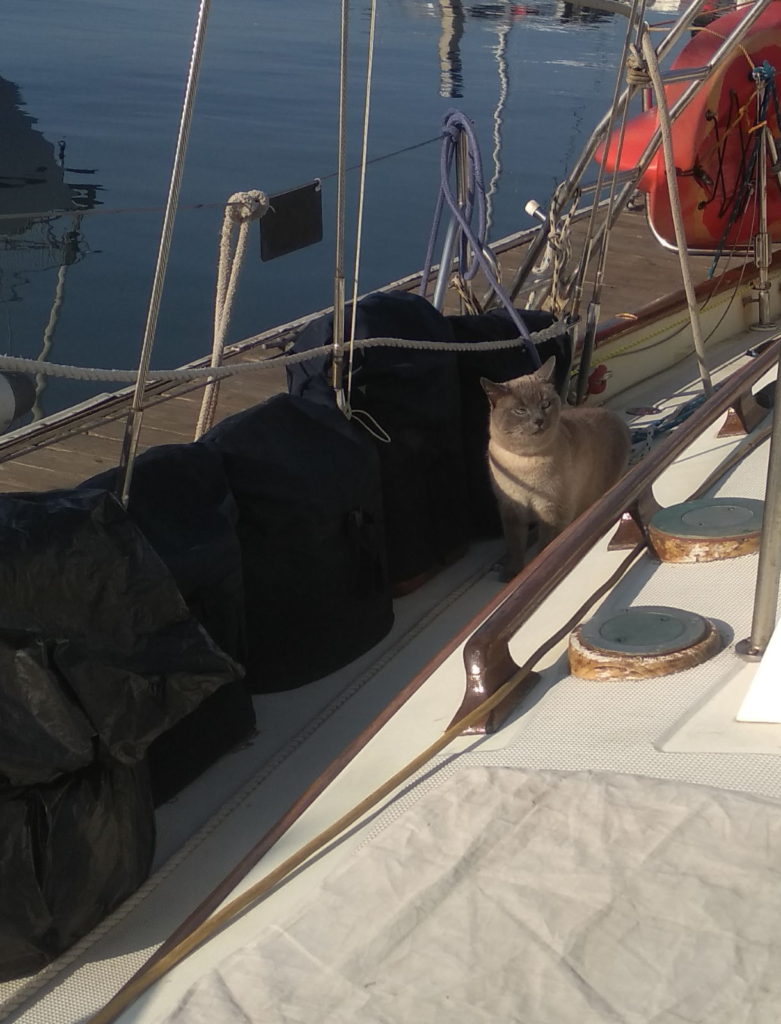
Later that day we saw and felt the first rain for weeks; it gradually became heavy and lasted well into Thursday 21st causing parts of the town to become flooded. We were due to leave the following day and the rain had delayed our preparations a bit so we had to fit a lot in on that Thursday. The town was in the throes of preparing for its annual Baja 1000 car rally and our route to town in the morning took in the streets that had been especially prepared for the event. Stalls had been set up along every available space either side of the main road, traffic had been diverted and people were packed tightly on the road browsing the stalls and viewing the customised cars on display up to the starting line. We heard later that the rain caused the start to be postponed due to the flooding.
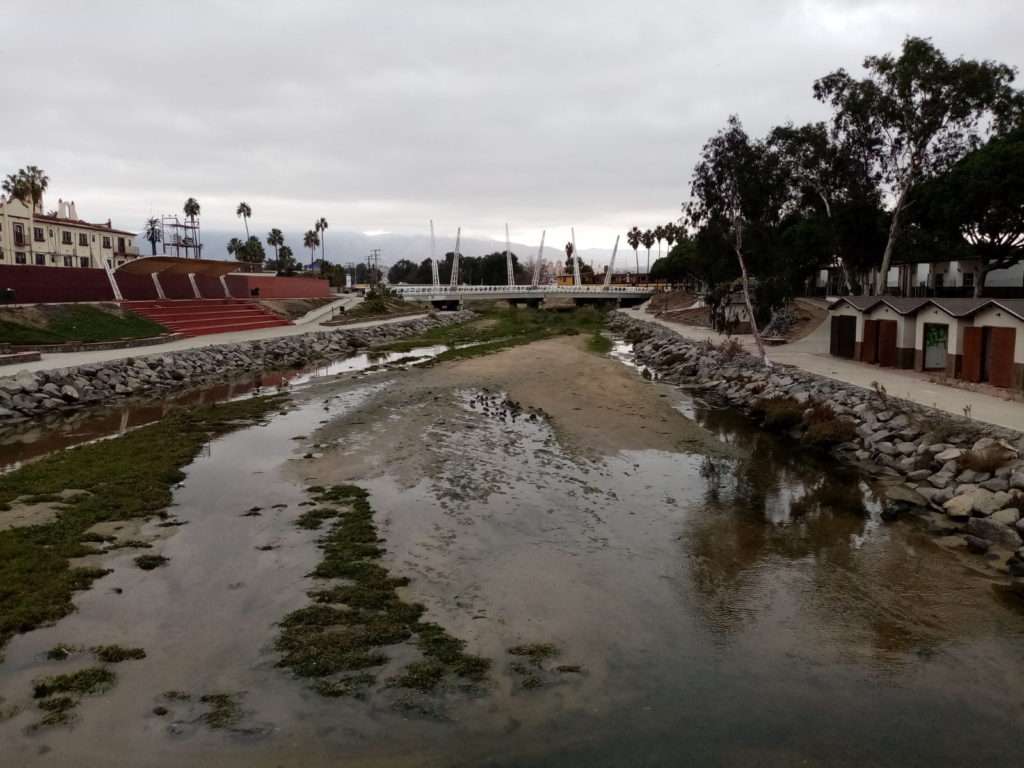
We had to make two trips to supermarkets, stocking up with food and drink since we would probably only have access to tiny village shops until we reached Cabo in the middle of December. Once we had bought and unloaded the provisions we had to check out of Ensenada, in line with the regulations of the Port Captain. This was basically a reverse of the checking in process, involving more form filling, more paper being passed across desks and another brisk walk to the port authority building with Victor. This time we had company in the form of Jordan, a solo sailor from California who would also be leaving in the morning. He kept me company while Paul and Victor marched ahead, and was kind enough to help me cross the road, too ;-).
After two weeks in Ensenada’s naval bay, we were going back to sea in order to continue our journey south along Mexico’s Baja California coast. We left at our planned departure time of 9 30 and I watched that huge flag get slowly smaller as we left it behind.
